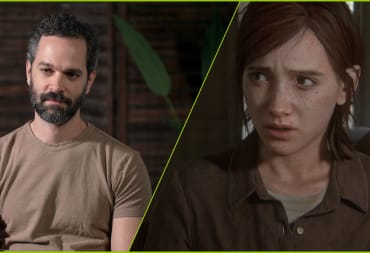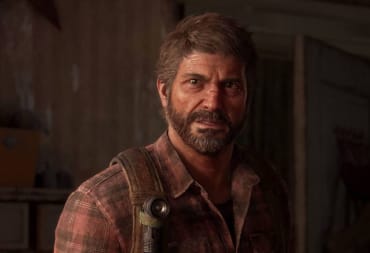This past weekend saw the debut of HBO's The Last of Us, a big-budget live-action adaptation of Naughty Dog's critically acclaimed game. A lot of digital ink has been spilled over whether or not this series would “break” the video-game adaptation curse (Netflix's Castlevania series would like a word) or how it would adapt “the greatest story that has ever been told in video games,” according to showrunner Craig Mazin.
Now that the first episode is out, it is time to compare HBO's The Last of Us episode 1 with its source material. How much remains the same? How much changed? And how do those changes affect the story and the characters?
This article contains spoilers for The Last of Us TV show and game.

HBO's The Last of Us Episode 1 – What Remains the Same?
Overall, the key plot beats of HBO's The Last Of Us Episode 1 is consistent with the source material. Blue-collar worker Joel Miller goes about his daily life when an outbreak of a deadly fungal spore begins to infect his neighbors. In the chaos of the outbreak, Joel's daughter Sarah is fatally shot and dies in his arms. The narrative then jumps forward 20 years. Civilization has collapsed. Joel is living in a quarantine zone overseen by a military group called FEDRA, making a living smuggling contraband. After an altercation with FEDRA and a local guerilla group called the Fireflies, Joel reluctantly agrees to escort a young girl named Ellie out of the quarantine zone to another location across the blighted country.

While attempting to escape the quarantine zone, Joel, his partner Tess, and Ellie are captured by FEDRA. The group manages to escape, but not before discovering Ellie is infected. Ellie insists that she's not a danger by showing Joel her infection wound, insisting that it is three weeks old. Since everyone turns within two days, this is an anomaly. As FEDRA sends more men to investigate, Joel, Tess, and Ellie run into the devastated ruins of a city. Their journey across the blighted U.S. begins.
What is impressive about HBO's The Last of Us episode 1 is that the show isn't just a pretty-looking pantomime of the game. Showrunner Mazin did his homework with the little details; how certain scenes and lines are recreated almost exactly from the source material. The layered significance of Joel's broken watch. The emotional devastation of Sarah's death still influencing Joel's behavior. The fact that Firefly leader Marlene is played by Merle Dandridge, the exact same actress from the game. The recurring themes of light in the face of human bleakness embodied by the Fireflies, it's all here.

HBO's The Last of Us Adaptation – What Has Been Changed?
As for how much HBO's The Last of Us changes from its source material, there is a lot to discuss. First, there is a big difference when it comes to audience information. The game opens in medias res with the infection already in full swing, with Joel and Sarah caught in the middle. By contrast, the HBO series starts with two scientists giving a plausible rationale for how human-controlling parasitic fungi could happen, followed by the world slowly ending around the characters. While the source material disorients with aggressive quickness, the HBO series stresses with drawn-out suspense.
In addition, the HBO series isn't stuck to Joel's POV. The first half of the episode actually fleshes Sarah out as a three-dimensional character rather than a prop to be fridged. Marlene gets her own subplot where she's trying to get enough Firefly allies together to escort Ellie to a safe location, only for things to go sideways, forcing her to rely on Joel. We also get some additional scenes of Ellie while she's with the Fireflies, swearing like a sailor and being a standoffish teenager. There are also several scenes showing regular life in the FEDRA zone, including agents scanning potential survivors and executing them if they are infected.
Thematically, HBO's The Last of Us brings in some real-world historical influences. The HBO series sets the start of the infection in 2003, with the post-apocalypse story being set in 2023. Not only does this bring the fear of the other that was persistent during the War on Terror – a character honestly asks if the outbreak was caused by terrorists – it also reinforces distrust in institutions. This gels really well with The Last of Us's more flawed humanistic approach to a post-apocalyptic story, one where the irrational flaws of the human condition lead to monstrous acts and measures. It also helps audiences quickly grasp the gray morality the series dabbles in.

Finally, there is the character of Joel, who has undergone the most change in adaptation. In the source material, Joel fit Naughty Dog's distinct mold of videogame protagonist: someone who could be reasonable during key plot points but could be a one-man army when called on. In the prologue, Joel guns down an infected before he even knows an outbreak is happening. Later on, there's a beat where people are running scared past the car he's in and he tells the driver to just go over them.
This becomes more bleak after the time jump. Joel's sole motivation for getting involved at first is because someone is messing up his corner of the smuggling trade. This is intercut with a videogame tutorial where he bludgeons, shoots, and strangles other survivors to get to his target. As for why he agrees to help Marlene, it's because she promised him guns and medicine. He's effectively a crime boss reinforcing his turf. That kind of selfish, “screw you, got mine” aggression is almost impossible to come back from for a pilot episode of a series, let alone a whole season.

Enter the HBO adaptation, which makes some subtle changes to soften the character. Throughout the episode, Joel is shown as being reluctant to violence. While he does pull a gun on a character, he doesn't fire it. He is no pushover, Tess even mentions he has a reputation for being like Clint Eastwood in a throwaway line, but we never see Joel do anything truly heinous without remorse. The closest thing to heartlessness we get is before the time jump when he refuses to pick up several stranded hitchhikers.
As for Joel's criminal enterprise in the FEDRA zone, that has been changed as well. Rather than being a violent recluse with a (relatively) comfortable living gun running and dealing pills, Joel takes odd jobs around the zone, continuing his working man background. His shadier dealings in the show are reduced to selling pills and cigarettes to certain people for favors, closer to a prison inmate working a hustle.
Joel's motivation for getting involved in the HBO series is because he's trying to get a car restored so he can investigate why his brother Tommy went radio silent. As for Marlene's favor, it's because Joel knows that Tommy is with the Fireflies and that Tommy and Marlene have history. Their goals align, but Joel's motivation is more family driven than personal.
While Pedro Pascal does a great job bringing a lot of Joel's notable traits to the big screen, this adaptation takes the character from “pitch-black broken ball of anger and resentment” to “traumatized but good-natured survivor.” As for how this character will progress, that is something the rest of the episodes will reveal.

Overall, HBO's The Last of Us makes some really smart decisions when it comes to an adaptation. It has kept a lot of the core elements that made the original work, and the change in medium has only led to an expansion of the material. While other TV adaptations have done phenomenal work with more esoteric material like Castlevania and Arcane, this take on Naughty Dog's version of the end of the world might have cracked a code for future adaptations to come.
Have a tip, or want to point out something we missed? Leave a Comment or e-mail us at tips@techraptor.net













